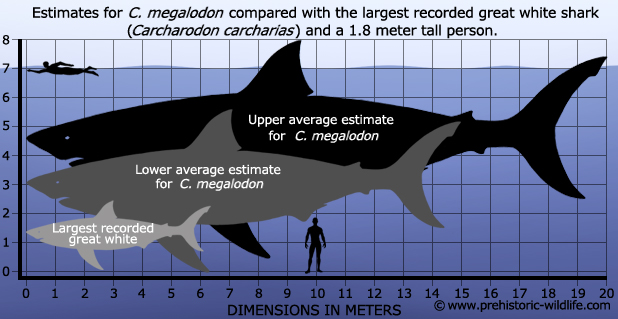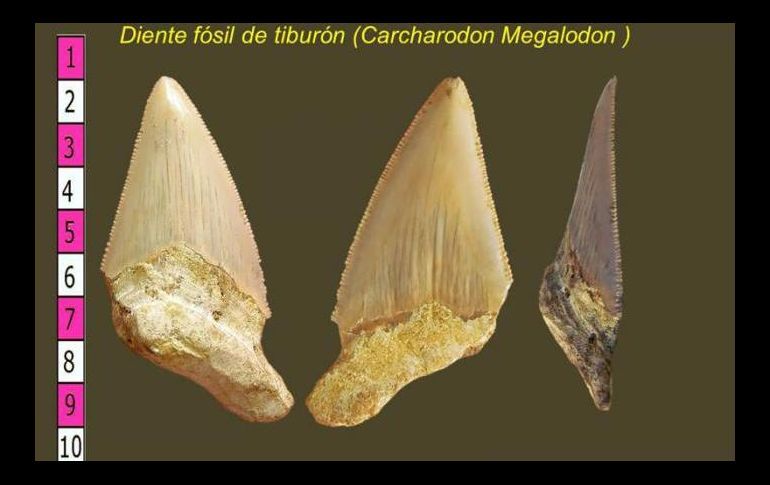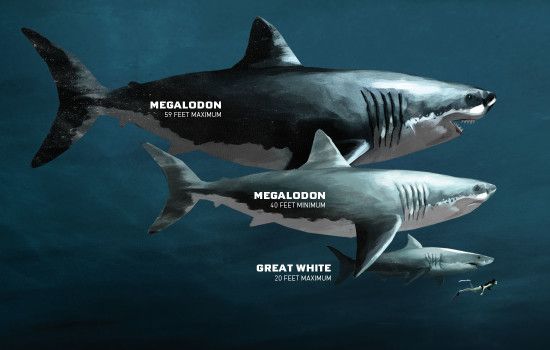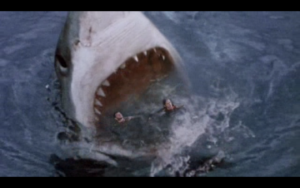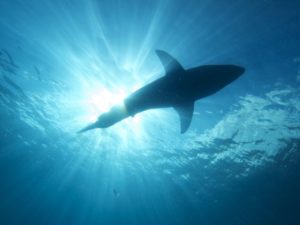They find fossilized tooth of giant prehistoric shark in Cuba. The incisor is in good condition and it is estimated that it belonged to a very young specimen of Carcharodon Megalodon. The discovery was made four meters deep.
A fossilized tooth 5.5 centimeters long and four inches wide, belonging to a giant prehistoric shark, was found during the excavation of a well in a town in the center of Cuba, where several of these findings are recorded, official media reported today.
The incisor, found in Rhodes (province of Cienfuegos), is in a good state of conservation and it is believed that it belonged to a very young specimen of Carcharodon Megalodon, a giant shark that inhabited the seas of the Cuban archipelago millions of years ago and could reach the 18 meters.
This animal in particular had to measure about seven meters, the specialist of the Cuban Society of Geology, Carlos Rafael Borges, specified to the state newspaper Granma.
The discovery was made four meters deep, while the young Cienfuegos man Yuri Alonso was digging a wellbore.
Alonso handed it over to a local engineer, who in turn passed it on to the team of experts that travel around the town looking for other similar specimens.
After the analysis, it was found that the rocks in which the fossil was found are of marine origin and belong to the Colón formation, some 23 million years old, said Borges.
Last November, specialists from Cienfuegos announced the discovery, also in Rhodes, of a group of teeth from several prehistoric shark species, although none were from Megalodon.
According to a census conducted in 2013, the country has registered three thousand 268 aboriginal archaeological sites -from ceremonial caves with rock art to cemeteries or lithic workshops- of which more than 1,800 were unregistered at that time.
Despite the interest and work of the Cuban experts, the Speleological Society of Cuba estimates that 60% of the 304 rock art sites registered until 2017 do not have patrimonial protection and 31% are outside the boundaries of the areas Protected from the island.
HALLAN RESTOS DE TIBURON PREHISTORICO GIGANTE EN CUBA.
Hallan diente fosilizado de tiburón prehistórico gigante en Cuba.El incisivo se encuentra en buen estado de conservación y se estima que pertenecía a un ejemplar muy joven de Carcharodon Megalodon. El descubrimiento se realizó a cuatro metros de profundidad.
Un diente fosilizado de 5.5 centímetros de largo y cuatro de ancho, perteneciente a un tiburón prehistórico gigante, fue hallado durante la excavación de un pozo en una localidad del centro de Cuba, donde se registran varios de estos hallazgos, informan hoy medios oficiales.
El incisivo, encontrado en Rodas (provincia de Cienfuegos), se encuentra en buen estado de conservación y se estima que pertenecía a un ejemplar muy joven de Carcharodon Megalodon, un escualo gigante que habitó los mares del archipiélago cubano hace millones de años y podía alcanzar los 18 metros.
Este animal en particular debió medir unos siete metros, especificó al diario estatal Granma el especialista de la Sociedad Cubana de Geología, Carlos Rafael Borges.
El descubrimiento se realizó a cuatro metros de profundidad, mientras el joven cienfueguero Yuri Alonso cavaba un pozo brocal.
Alonso lo entregó a un ingeniero local, quien a su vez se lo pasó al equipo de expertos que recorre la localidad en busca de otros especímenes similares.
Tras el análisis, se constató que las rocas en las que fue hallado el fósil son de origen marino y pertenecen a la formación Colón, de unos 23 millones de años de antigüedad, dijo Borges.
En noviembre pasado, especialistas de Cienfuegos anunciaron el hallazgo, también en Rodas, de un grupo de dientes de varias especies de tiburones prehistóricos, aunque ninguno era de Megalodon.
De acuerdo con un censo realizado en 2013, en el país se han registrado tres mil 268 sitios arqueológicos aborígenes -desde cuevas ceremoniales con arte rupestre hasta cementerios o talleres líticos- de los cuales más de mil 800 estaban sin registrar en aquel momento.
A pesar del interés y la labor de los expertos cubanos, la Sociedad Espeleológica de Cuba estima que el 60 % de los 304 sitios de arte rupestres registrados hasta 2017 no cuenta con protección patrimonial y el 31 % se encuentra fuera de los límites de las áreas protegidas de la isla.
Agencies/Informador/Internet Photos/Arnoldo Varona/TheCubanHistory.com
THE CUBAN HISTORY, HOLLYWOOD.



